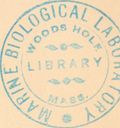Deer Flies
Chrysopsinae
Classification
- Phylum: Arthropoda
- Subphylum: Hexapoda
- Class: Insecta
- Order: Diptera
- Infraorder: Tabanomorpha
- Family: Tabanidae
- Subfamily: Chrysopsinae
Pronunciation
How to pronounce Chrysopsinae: //ˈkrɪsɒpsɪniː//
These audio files are automatically generated. While they are not always 100% accurate, they are a good starting point.
Images






Summary
Chrysopsinae, commonly known as deer flies, are bloodsucking insects known for their painful bites and role as pests. They thrive in wetlands and have complex life cycles involving larval stages that feed on organic matter and adult stages that can transmit diseases.
Physical Characteristics
Deer flies are large flies with brightly-colored compound eyes and large clear wings with dark bands. They are larger than houseflies but smaller than horse-flies.
Identification Tips
A lateral view of the head showing antennae is most useful for identification; the hind tibia has apical spurs, and the flagellum consists of a long slender basal part and four short apical flagellomeres.
Habitat
Wetlands, including salt marshes; commonly found near water or damp areas.
Distribution
North America; ~120 species in 4 genera, predominantly in the genus Chrysops.
Diet
Adults feed on plant nectar (males) and vertebrate blood (females); larvae are carnivorous and detritus feeders.
Life Cycle
Females lay between 100 and 800 eggs on vegetation near water. The larval stage lasts one to three weeks, followed by a pupal stage before emerging as adults in late spring and summer.
Reproduction
Deer flies reproduce by laying eggs in batches on vegetation close to water or dampness.
Predators
Nest-building wasps and hornets, dragonflies, and some birds like the killdeer.
Ecosystem Role
As both predators (larvae) and pests (adults), they play a role in food webs and ecosystem dynamics.
Economic Impact
Considered pests to humans and cattle, causing annoyance and potential transmission of diseases.
Cultural Significance
Blood-sucking behavior has led to negative perceptions, but they play ecological roles as pollinators and as part of the food web.
Health Concerns
Can transmit parasites and diseases such as tularemia and anaplasmosis; painful bites and allergic reactions may result from their feeding.
Collecting Methods
- Netting adults
- Trapping devices
Preservation Methods
- Pinning specimens
- Freezing for storage
Similar Taxa
- Tabaninae (Horse-flies)
- Pangongiinae
Misconceptions
DEET is often believed to repel deer flies, but it is not effective in preventing bites.
Tags
- deer flies
- Chrysopsinae
- Tabanidae
- bloodsucking
- pests